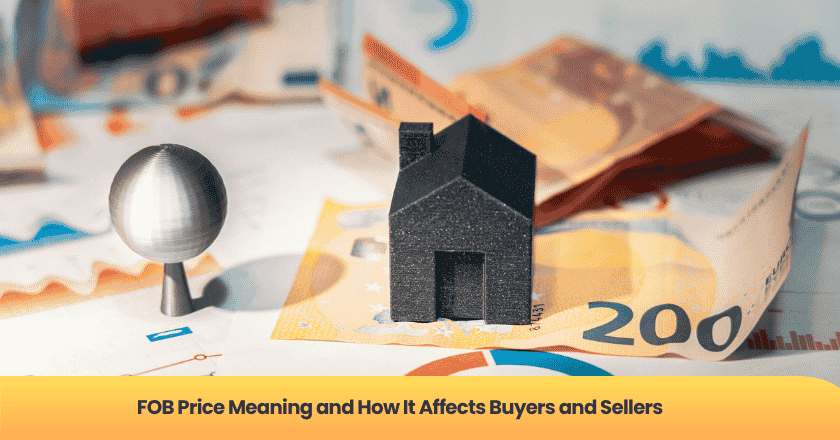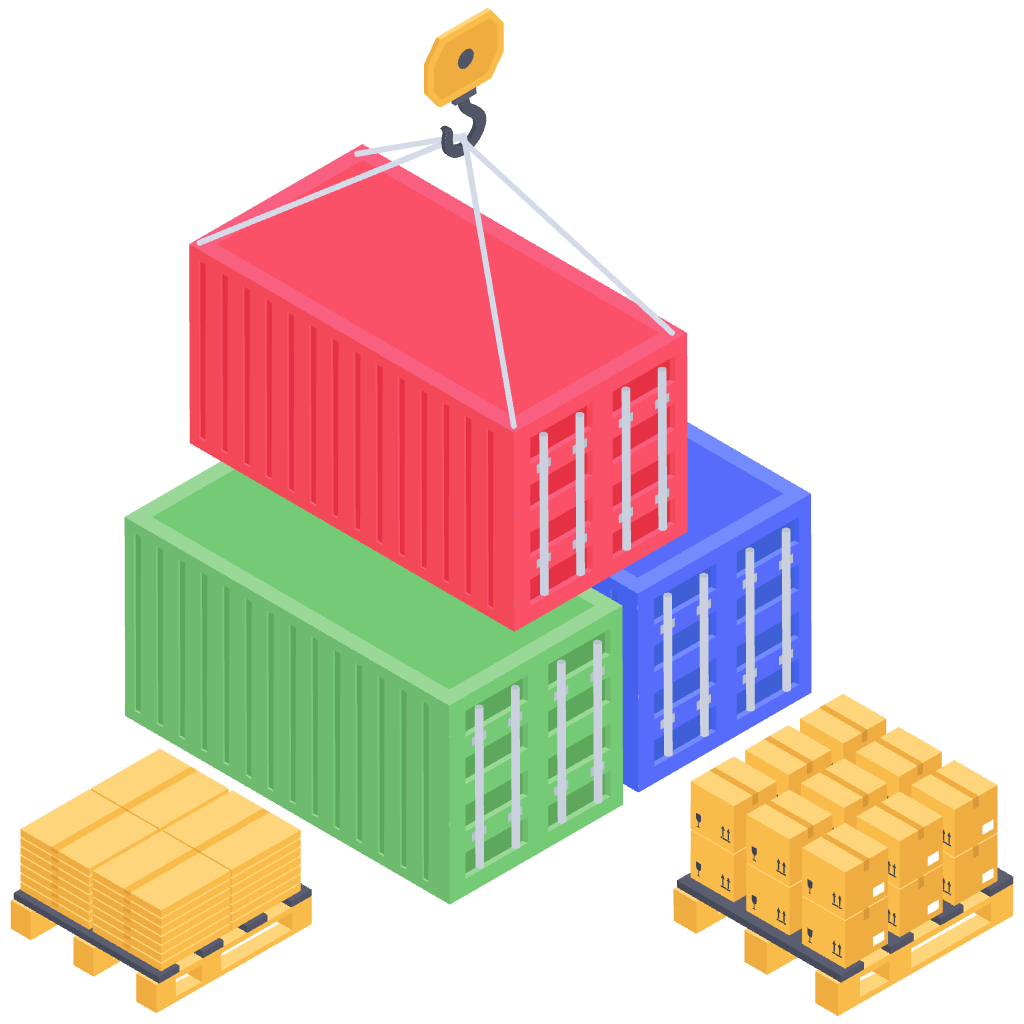
I see "FOB" as a crucial term in global trade. FOB stands for "Free on Board," and this defines the point where ownership and risk shift from seller to buyer. When I look at the fob price meaning, I notice that fob determines who pays for shipping and handles customs. Buyers must understand fob to control costs and avoid unexpected fees. Sellers rely on fob to clarify their responsibilities and manage risk. I always pay attention to fob in every transaction, because fob influences final expenses and delivery terms.
Key Takeaways
- FOB price indicates where the responsibility and risk shift from seller to buyer, crucial for managing costs.
- Understanding FOB terms helps avoid unexpected fees and disputes in international shipping.
- Buyers should always confirm the FOB origin in contracts to clarify when their responsibilities begin.
- Negotiating clear FOB terms and cost breakdowns leads to better deals and smoother transactions.
- Expert support can help identify hidden costs and ensure compliance, maximizing the benefits of FOB transactions.
FOB Price Meaning
What Is FOB Price?
When I discuss fob price meaning, I always start with the basics. FOB stands for free on board. In international shipping, fob price refers to the cost of goods at the point where the seller loads them onto the vessel at the fob origin. This term plays a critical role in global trade. I see fob price as the dividing line between seller and buyer responsibilities. The seller covers all costs up to the fob origin, including production and local transport. Once the goods reach the fob origin, the buyer takes over. I notice that fob price meaning often confuses new importers. Many believe fob price covers shipping to the final destination, but it only includes costs up to the fob origin.
Tip: Always confirm the fob origin in your contract. This detail determines when you assume risk and responsibility.
I use fob price meaning to clarify who pays for each part of the journey. In international shipping, fob price helps me avoid disputes over hidden costs. I rely on fob price to set clear expectations with suppliers. When I negotiate, I focus on the fob origin because it marks the point where my obligations begin.
What Does FOB Price Include?
I break down fob price meaning into specific cost components. The fob price includes:
- The cost of manufacturing the goods.
- Packaging and labeling.
- Inland transportation to the fob origin (usually the port).
- Export customs clearance and documentation.
- Loading the goods onto the vessel at the fob origin.
I always check these details before finalizing any deal. The seller handles everything up to the fob origin. After that, I pay for ocean freight, insurance, and import duties. Many people misunderstand fob price meaning and think it covers the entire shipping process. In reality, fob price stops at the fob origin.
| Cost Component | Seller Pays (Up to FOB Origin) | Buyer Pays (After FOB Origin) |
|---|---|---|
| Manufacturing | √ | × |
| Packaging/Labeling | √ | × |
| Inland Transport | √ | × |
| Export Customs | √ | × |
| Loading at Port | √ | × |
| Ocean Freight | × | √ |
| Insurance | × | √ |
| Import Duties | × | √ |
I use this table to explain fob price meaning to new buyers. It shows exactly where the seller's responsibility ends and mine begins. In international shipping, fob price meaning helps me plan my budget and manage risk. I always ask suppliers to specify the fob origin, so I know when I take control of the shipment.
Note: Never assume fob price includes delivery to your warehouse. It only covers costs up to the fob origin.
I find that understanding fob price meaning protects me from unexpected expenses. I use fob price to negotiate better deals and avoid confusion. In every transaction, I make sure both parties agree on the fob origin and what fob price includes.
FOB Process and Roles
Seller's Role
When I work with suppliers, I pay close attention to the seller's responsibilities under fob terms. The seller must prepare the goods, package them, and transport them to the fob shipping point. At this stage, the seller handles export customs clearance and loads the goods onto the vessel. The seller’s job ends at the fob shipping point. I always confirm that the seller completes these steps before I take over. The seller does not pay for ocean freight or insurance after the goods reach the fob shipping point.
Buyer's Role
Once the goods reach the fob shipping point, I step in as the buyer. I arrange and pay for ocean freight, insurance, and import duties. My responsibility starts at the fob shipping point and continues until the goods arrive at my warehouse or chosen location. I monitor the shipment closely to avoid delays or extra costs. I know that fob destination terms shift more responsibility to the seller, but with fob shipping point, I take control earlier in the process.
Risk and Responsibility Shift
The most important moment in fob transactions is the transfer of risk and responsibility. At the fob shipping point, the risk moves from the seller to me. If anything happens to the goods after this point, I bear the loss. I always clarify the exact location of the fob shipping point in my contracts. Some buyers prefer fob destination, which means the seller keeps responsibility until the goods reach the buyer’s location. I compare fob shipping point and fob destination to decide which suits my needs. Understanding cost and risk distribution helps me make informed decisions and avoid disputes.
Example: I once imported electronics from China. The contract specified the fob shipping point as Shanghai Port. The seller delivered the goods, cleared customs, and loaded them onto the ship. From that moment, I managed the shipment, paid for ocean freight, and handled insurance. If I had chosen fob destination, the seller would have managed the shipment until it reached my warehouse.
I always review the fob terms to ensure clear cost and risk distribution. This process protects both parties and keeps transactions smooth.
FOB Price Negotiation
Cost Factors
When I negotiate fob pricing, I always analyze the main cost factors. The price depends on several elements. Manufacturing costs set the foundation. Packaging and labeling add to the total. Inland transportation to the port affects the final amount. Export customs clearance and documentation also play a role. Loading fees at the port can vary by location. I pay close attention to these details because they influence the overall fob pricing. Shipping costs after the goods leave the port do not fall under fob pricing, but they impact my total expenses. I compare supplier quotes to spot hidden charges. Understanding each cost factor helps me avoid surprises and plan my budget.
| Cost Factor | Impact on FOB Pricing |
|---|---|
| Manufacturing | High |
| Packaging/Labeling | Medium |
| Inland Transport | Medium |
| Export Customs | Low |
| Port Loading | Low |
Negotiation Tips
I use several strategies to negotiate better fob pricing. I request a detailed breakdown of all costs included in the fob price. I ask suppliers to clarify which services they provide up to the port. I compare offers from multiple suppliers to find the best value. I negotiate for lower packaging or transport fees when possible. I always confirm the fob point to avoid confusion about responsibility. I discuss shipping costs separately to keep my expenses clear. I focus on transparency and clear communication during every negotiation.
Tip: Always get written confirmation of the fob pricing structure before signing any contract.
Support
I rely on expert support to optimize my fob pricing negotiations. Professional sourcing agents help me identify cost-saving opportunities. They review supplier quotes and spot hidden fees. They ensure quality assurance throughout the process. I use their market insights to negotiate better terms. They help me manage shipping costs and reduce risk. The key advantage of fob is the clear division of responsibility, which makes negotiations straightforward. I trust experienced agents to guide me through complex negotiations and secure the best deals.
 The ways to reduce FOB purchase cost by 5–10%
The ways to reduce FOB purchase cost by 5–10%
FOB vs Other Terms
FOB vs CIF
When I compare fob with cif, I see clear differences in cost, responsibility, and risk. Fob means I take control of the goods once they are loaded onto the vessel. I pay for ocean freight, insurance, and all costs after the goods leave the port. With cif, the seller pays for cost insurance and freight to the destination port. I receive the goods with insurance and freight already covered. The main differences between fob and cif involve who pays for what and when risk transfers. Under cif, the seller handles more of the process, but I still take risk once the goods are on the ship. I often choose cif when I want less hassle with arranging freight and insurance. Fob gives me more control over shipping terms and costs.
| Shipping Term | Who Pays Freight? | Who Pays Insurance? | Risk Transfers At |
|---|---|---|---|
| fob | Buyer | Buyer | Loading on Vessel |
| cif | Seller | Seller | Loading on Vessel |
I use cif when I want the seller to manage more of the shipping process. Fob works better when I want to negotiate my own freight rates. I always check the shipping terms in my contract to avoid confusion.
FOB vs EXW
I also compare fob with exw. Exw stands for Ex Works. With exw, I take responsibility as soon as the goods leave the seller’s premises. I arrange all transport, export clearance, and shipping. Fob gives the seller more responsibility up to the port. I find exw useful when I want full control, but it adds more work and risk for me. Fob balances responsibility between buyer and seller. I prefer fob when I want the seller to handle export procedures.
Tip: Always match your shipping terms to your business needs. If you want more control, choose exw or fob. If you want less responsibility, cif may suit you better.
I always review the shipping terms before finalizing any deal. I look at cost, risk, and who manages each step. This helps me avoid mistakes and choose the best option for my business.
Common FOB Challenges
Mistakes to Avoid
I often see buyers and sellers make similar mistakes when handling fob transactions. One common pitfall is failing to specify the exact fob point in the contract. If I do not clarify the port or location, disputes can arise over responsibility and cost. Another mistake involves overlooking export documentation. I always check that the seller completes all paperwork before shipment. Some buyers assume fob covers all shipping expenses, but it only includes costs up to the designated point. I avoid confusion by reviewing every detail in the agreement.
Here are mistakes I watch for:
- Ignoring the need for clear contract terms.
- Overlooking export customs requirements.
- Assuming fob covers freight and insurance.
- Failing to track shipment after risk transfers.
- Not verifying packaging and labeling standards.
Note: I always confirm every step with the supplier to prevent misunderstandings.
Maximizing Benefits
I use several strategies to get the most out of fob transactions. First, I negotiate for transparent pricing and request a breakdown of all included costs. I select suppliers with strong export experience to reduce delays. I monitor the shipment from the fob point onward to manage risk. I also review packaging and labeling to ensure compliance with import regulations.
| Strategy | Benefit |
|---|---|
| Detailed cost breakdown | Avoid hidden charges |
| Supplier vetting | Minimize delays |
| Shipment tracking | Reduce risk of loss |
| Compliance checks | Prevent import issues |
I find that clear communication and thorough documentation help me avoid costly mistakes. I always match my shipping terms to my business needs. By staying proactive, I maximize savings and minimize risk in every fob transaction.
I see FOB price as a vital concept in global trade. Understanding FOB terms helps me control costs and manage risk. I always clarify responsibilities to avoid disputes and unexpected expenses.
Key takeaways:
- FOB price defines where cost and risk shift between buyer and seller.
- Clear FOB terms protect both parties in international transactions.
- Expert guidance ensures smooth and successful FOB deals.
FAQ
What does FOB mean in shipping?
I see FOB as "Free on Board." This term shows where the seller’s responsibility ends and mine begins. I use it to clarify who pays for shipping and when risk transfers.
Does FOB price include shipping to my warehouse?
FOB price covers costs up to the port of shipment. I pay for ocean freight, insurance, and delivery to my warehouse after the goods leave the port.
Who handles export customs under FOB terms?
The seller manages export customs clearance and documentation. I always confirm this step before the goods reach the port to avoid delays.
When does risk transfer from seller to buyer in FOB transactions?
Risk shifts to me once the goods are loaded onto the vessel at the agreed port. I track this moment closely to protect my interests.
Can I negotiate FOB terms with suppliers?
I negotiate FOB terms to match my business needs. I request detailed cost breakdowns and confirm the FOB point in every contract for clarity.
Get Started Today
Let's Turn Your Sourcing Goals into RealityWeChat:+86 15157124615
WhatsApp:+86 15157124615
Address:Building 10 #39 Xiangyuan Road, Hangzhou, China


.png)
.png)
